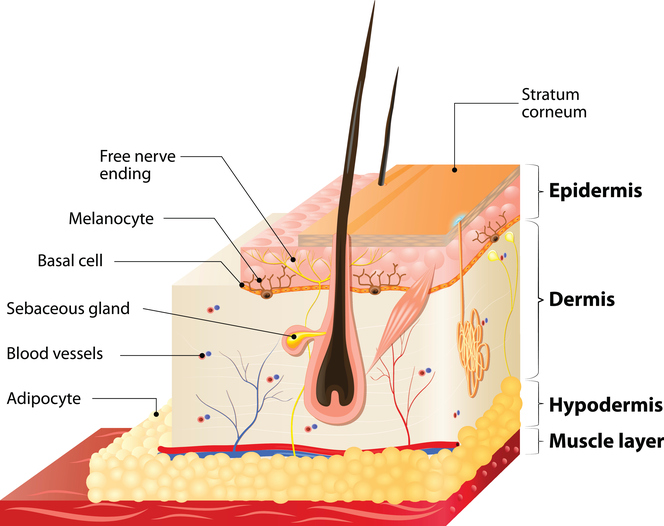Introduction
Have you ever seen a tattoo marking the skin with designs, legends, etc., by making punctures in it and inserting pigments on the skin? You may even have one. The oldest discovery of tattooed human skin dates between 3370 and 3100 BC on the body of Ötzi the Iceman, a 5,300 year old mummy! (Read Scientists Have Mapped All of Ötzi the Iceman's 61 Tattoos from Discover if you'd like to know more.)
According to Statistics Brain, 45 million people in America have at least one tattoo, and 36% of those between the ages of 18-26 have one or more tattoos.

This is a traditional method of tattooing.
But, have you ever wondered why a tattoo doesn't wash off? Even when the skin is scrubbed, the tattoo remains. This is because of the where the ink, or pigment, is deposited into the skin. The pigment is injected into the layer of skin called the dermis. This layer does not produce cells that will migrate to the surface to be sloughed off as does the layer above it, called the epidermis. So, no sloughing of cells, no loss of tattoo.

Now, let's learn more about this awesome system that contains the largest organ in the body!
| Lesson Objectives |
|
Following successful completion of this lesson, students will be able to...
Enduring Understandings
The above objectives correspond with the Alabama Course of Study: Anatomy and Physiology standards: 3 |
